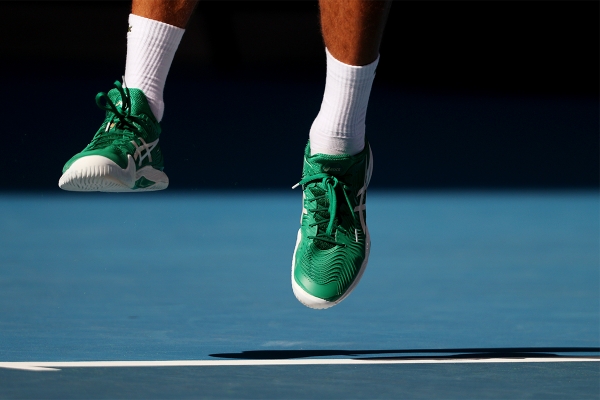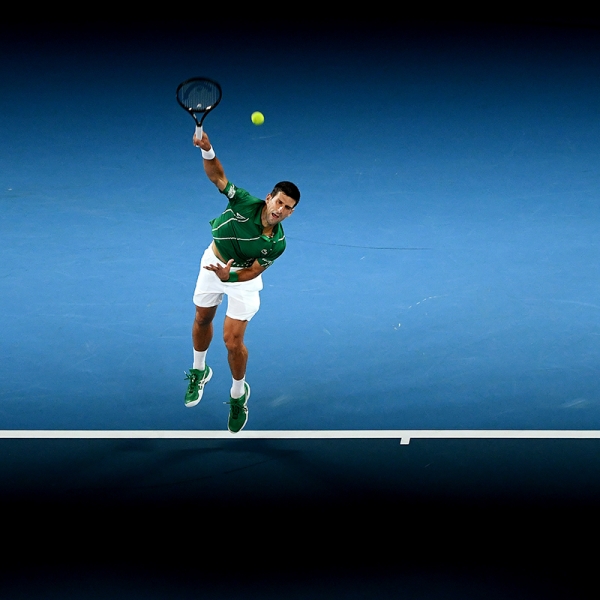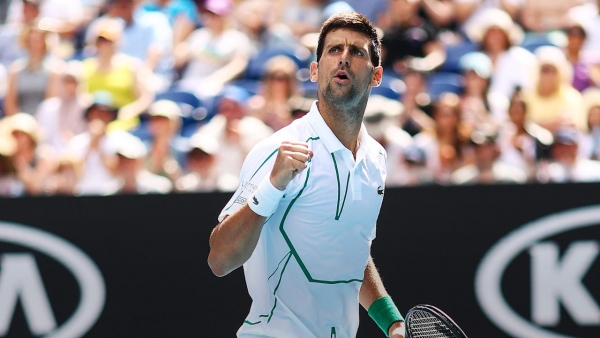Data and insights powered by Infosys
From his six-hour win over Rafael Nadal at Australian Open 2012, to relentlessly pummelling Andy Murray into submission in the 2015 and 2016 finals, stamina has been one of the hallmarks of Novak Djokovic’s success in Melbourne over the years.
Based on data from Infosys, collated over his four matches so far at Australian Open 2020, Djokovic’s engine is nicely honed for the sterner tests to come in week two, along with other key facets of his game. Here are three areas where the Serb is looking strong ahead of the quarterfinals.
1. Stamina and tactical awareness
In his fourth-round clash with Diego Schwartzman, Djokovic only seemed to get better and better as the rallies progressed, emphasising just what a complete player he is at his very best. While he’s certainly capable of playing first strike tennis – as he showed in last year’s final win over Nadal – he can also outlast the tour’s grinders in the longer rallies.
Against Schwartzman - one of the best retrievers on the tour - Djokovic struck 38 winners and remarkably, 18 of them came in rallies lasting longer than five shots. This proved to be a nail in the heart of the tenacious Argentine, who is stronger than most players in the lengthier exchanges.
A keen student of data, Djokovic had clearly worked out that Schwartzman was weaker when pulled out wide. The majority of his baseline winners came from cross-court shots, and his highest win percentage on serve came when going wide.

2. Clutch points
Winning the key points has been a Djokovic strength for many a year, and when the going got tough he was stronger than Schwartzman on almost every occasion.
Infosys defines crucial points as those which, when lost by any player, can potentially lead to a substantial change in the outcome of the match.
Each player’s winning and losing probability is calculated throughout the match at every point, and after every point is completed, Infosys tracks the changes in probability for both outcomes. Points where this change in probability is the highest are deemed crucial points.
Djokovic’s level on these crucial points was simply phenomenal against Schwartzman. He made just a single unforced error at these clutch moments, and on crucial points he won 100 per cent of his first serve, second serve, break points and net points.

3. Impressive returning
In the last eight, Djokovic is up against one of the most potent serves in men’s tennis in Milos Raonic. The Canadian has returned to the kind of form which took him to No.3 in the world over the past couple of weeks. He has not dropped a set in his four matches so far, taking out Stefanos Tsitsipas and Marin Cilic in the process, and facing a mere seven break points in the process – saving all of them.
However, in Djokovic he comes up against the game’s best returner. The Serb won nearly 40 per cent (35/89) of his points on the Schwartzman serve in their match.
However, Djokovic’s own serving did dip slightly on the level he’s shown in early rounds which could be a source of opportunity for the Canadian. He only made 63 per cent of first serves, falling from a high of 74 per cent in his third-round match, and only winning 74 per cent of his first serve points – down from 93 per cent in his second and third-round encounters.
While Raonic is mainly down for his monster serve, he has been fairly clinical when opportunities have arisen, converting five of 14 break points against Tsitsipas and Cilic. If Djokovic’s serving is below par on Tuesday, he may have a glimmer of hope.

